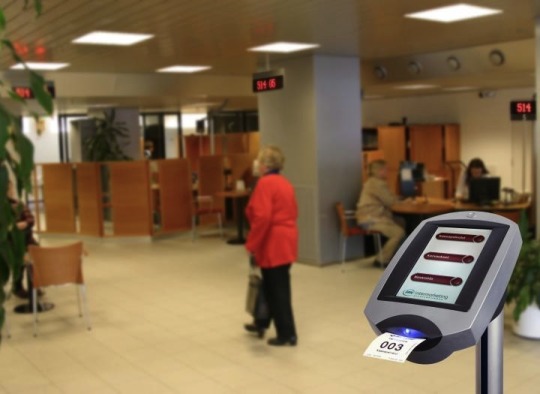Don't wanna be here? Send us removal request.
Text
How Does a Queue Management System Work?
Queue management systems improve customer bonds by improving the customer experience while queuing. Similar to business intelligence, service intelligence uses data to make better service decisions. It is useful for a variety of scenarios, including retail and restaurants. To learn more about queue management systems, read this article. This article outlines several of the most common methods. Wavetec, LIFO, and integrated queue management systems are the three most common.
Data Security:
A Wavetec queue management system is a messaging framework that processes messages in a sequential manner. Messages can belong to a single group or multiple groups, and each group is assigned a default delivery delay. The message order within each group is maintained by setting a message group ID, and the order of messages within each group is preserved. However, this default order is not enforced across all message groups. In this case, multiple applications may simultaneously send messages with the same message group ID. This will result in the messages arriving in a FIFO queue in the order in which they were added.
A typical processing scenario shows the differences between a traditional digital branch transformation and an enhanced one. The difference can be seen in the amount of read/write memory access and FIFO queue controller polling required during the process of processing a three-dimensional quadrilateral primitive. The example demonstrates a basic x-y-z-coordinates, which are identified as the relative point for processing.
A queue management system using a ordering strategy will send the hottest leads to the first free agent. The problem with this approach is that the hottest leads cool down quickly, reducing the chances of conversion. Instead of trying to match a free agent with the highest priority, LIFO routing puts the hottest lead first, giving the agent more time to convert. Here are the pros and cons of a LIFO queue management system.
Providing Wait Time Estimates:
The most obvious difference between LIFO and FIFO is the order in which items are put. When using a LIFO system, customers are forced to come to the line at a staggered time. This makes for shorter queues, but there is a downside: people tended to queue up early, which was riskier. Then, when people finally joined the queue, they chose to wait for more time, causing the queue to become longer.

Providing wait time estimates in a queue manager can be challenging. Although call center operations must remain flexible, the present invention addresses this problem. The present invention associates a group of agents with a set of caller conditions. These conditions may include dynamic changes in the position of the caller in the queue and the pool of available agents. It may also provide a caller with periodic updates on the expected wait time.
By providing accurate wait times, queue managers can improve the customer experience. Providing wait time estimates in queue management systems will reduce the average waiting time of customers. Customers will be able to judge their expectations of wait times based on realistic wait times, which will make them feel better. Furthermore, providing wait time estimates in queue management systems will decrease the abandonment rate of customers. And if a customer does not have to wait for hours, it can even improve their satisfaction levels.
Integrating Physical and Digital Channels:
Integration of physical and digital channels in queue management systems is becoming increasingly important for public services. In fact, many large organisations are turning to digitalization to help improve their operations and create a more positive customer experience. Many of these organizations are launching projects such as the Digital India initiative, the Saudi Arabia Vision 2030, and the US Digital Government Strategy. Public offices are also deploying queue management to address issues such as skills shortages and budget cuts.
The number of customers arriving at a service location varies throughout the day. Some customers may prefer to wait in a physical queue, while others may prefer to use ticketing kiosks. In either case, queue management systems allow the customer to fill out an electronic form and receive their service more quickly. By integrating physical and digital channels into queue management system, businesses can maximize customer satisfaction and retain customers. When implemented properly, these systems can save a business time and money.
There are many features to look for in a queue management system. It is important to choose the one that gives your organization more than you need for your existing requirements. While there are plenty of options available, it is important to select a solution that protects your customer data and GDPR compliance. Additionally, it should be flexible enough to meet your expanding needs. Some of these features are described below. Here are a few additional tips for choosing a queue management system.
Conclusion:
Firstly, consider the purpose of using a queue management system. Is it to reduce foot traffic? Is it to streamline customer service? Or do you need to lower the average wait time? Considering all the advantages of queue management, it is vital to understand the customer's needs. As Steve Jobs famously said, "start with the customer and work backwards from the technology." Identifying needs and objectives will help you configure a solution that works best for you.
1 note
·
View note